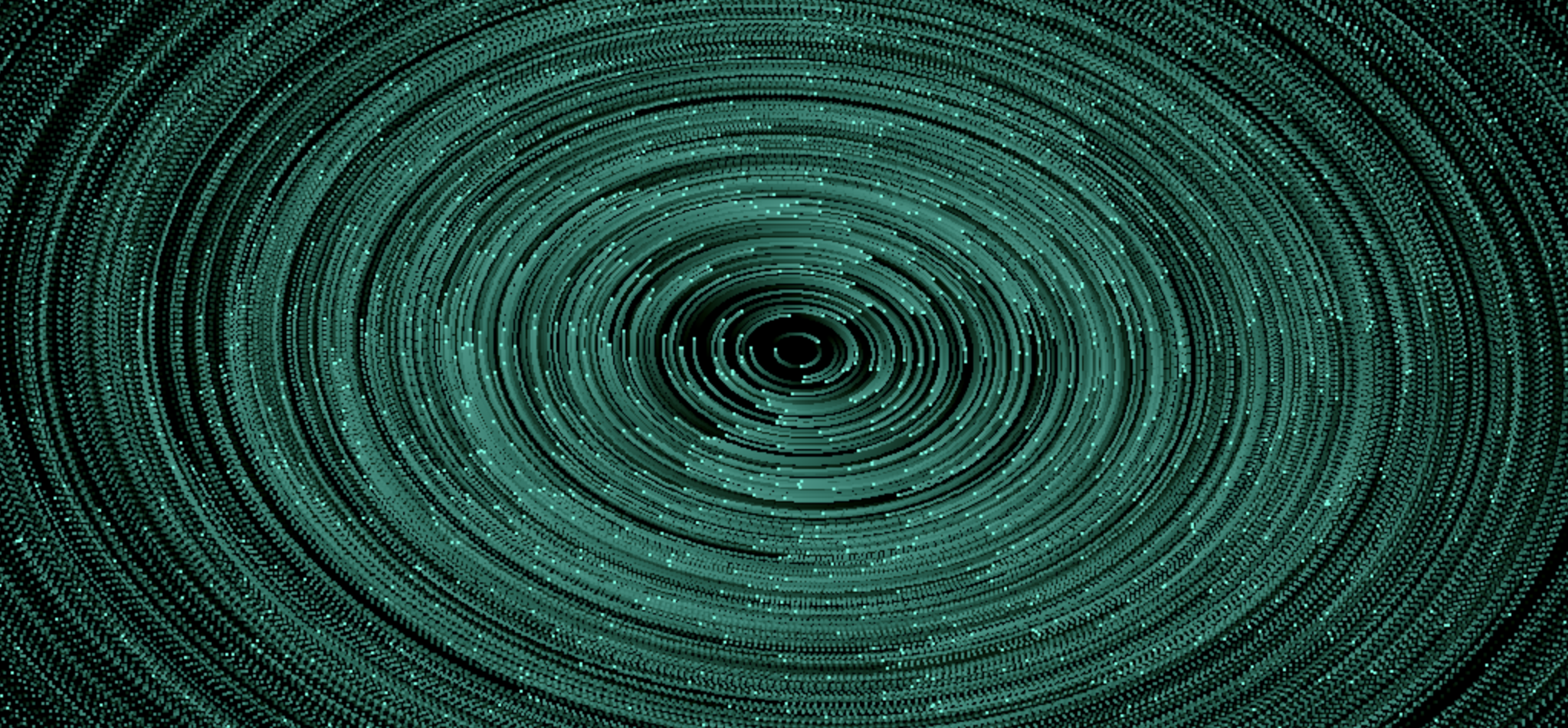
An Ode – ODE Inspired Digital Artwork
An Ode
This project began as a technical experiment — simulating particles governed by ordinary differential equations (ODEs) — and slowly became something more: a digital artwork, a reflection on stability, chaos, and beauty.
Science as Art
Leonardo da Vinci once blurred the line between art and science, embedding geometry into paintings and motion into sketches.
This work follows the same spirit: ODEs as brushstrokes, trajectories as patterns, stability as harmony.
The Mathematics of Change
Ordinary differential equations describe how systems evolve with time:
- pendulums and oscillators
- electric circuits
- predator–prey populations
The key lies in eigenvalues:
- negative → spirals converge (stability)
- positive → trajectories explode outward (chaos)
- complex → complex eigenvalues produce oscillatory trajectories, where the real part controls damping and the imaginary part determines rotational frequency
From Equation to Artwork
The simulation had the following features to enhance visuals:
- particle lifespans and glow
- fading screen to show traces of motion
- repelling forces to mimic invisible walls
- Gaussian initialization for organic swarms
Each run produces something new depending on the governing matrix ( A ).
Between Engineering and Art
The equations that form the foundation of this artwork are the same ones governing real systems —
from RLC circuits and thermal cooling to population dynamics and oscillators.
However, this project does not merely connect to engineering and science — it is engineering and science in existence.
As in Leonardo da Vinci’s works, where mechanical precision coexisted with artistic grace,
the scientific elements here are intentional and visible.
An ordinary differential equation, such as
[\frac{dx}{dt} + a x = b]
can represent an electric circuit or a cooling process, depending on interpretation.
Likewise, the same simulation may evoke a physical or emotional system —
its meaning left open, its mathematics precise.
Obstacles introduced into the system alter trajectories, bending them as though deflected by invisible forces.
While these were purely mathematical constructs, they can be read as physical barriers,
energy fields, or even metaphors for resistance and adaptation.
This intersection — of form, function, and feeling — is where engineering becomes art.
Aesthetic Reflections
The theoretical foundation of An Ode is built on interpretations from Plato, Aristotle, Susan Sontag, and Clement Greenberg, extending to the ideas of quantum art and the cosmic web.
Plato and Aristotle
Plato saw art as mimesis, a reflection of ideal truths.
Here, ODE solutions act as visual manifestations of those truths: mathematical forms that express
the underlying order of the universe.
Aristotle, by contrast, valued art for its emotional engagement and catharsis.
In this context, the spiraling trajectories, convergences, and instabilities
become emotional experiences of harmony, chaos, or decay.
Susan Sontag
Sontag argued for experiencing art without over-interpretation.
These ODE visuals invite precisely that: to feel mathematics as movement and light,
not only as formal logic. Their beauty is accessible regardless of technical understanding.
Clement Greenberg
Greenberg’s Avant-Garde and Kitsch distinction positions this project between the two.
Its conceptual depth and computational originality make it avant-garde,
yet its reproducibility through code hints at kitsch,
challenging where digital art resides between uniqueness and automation.
Full Report
For a deeper exploration of the ideas behind An Ode, including its artistic, philosophical, and scientific foundations, you can read the full report:
The report expands on:
- The connection between mathematical dynamics and visual aesthetics
- Interpretations through Plato, Aristotle, Sontag, and Greenberg
- The relationship between engineering precision and artistic expression
Closing
An Ode sits between simulation and artwork, between equations and philosophy. It is a reminder that math is not only a tool for prediction — it can also be a medium for creation.